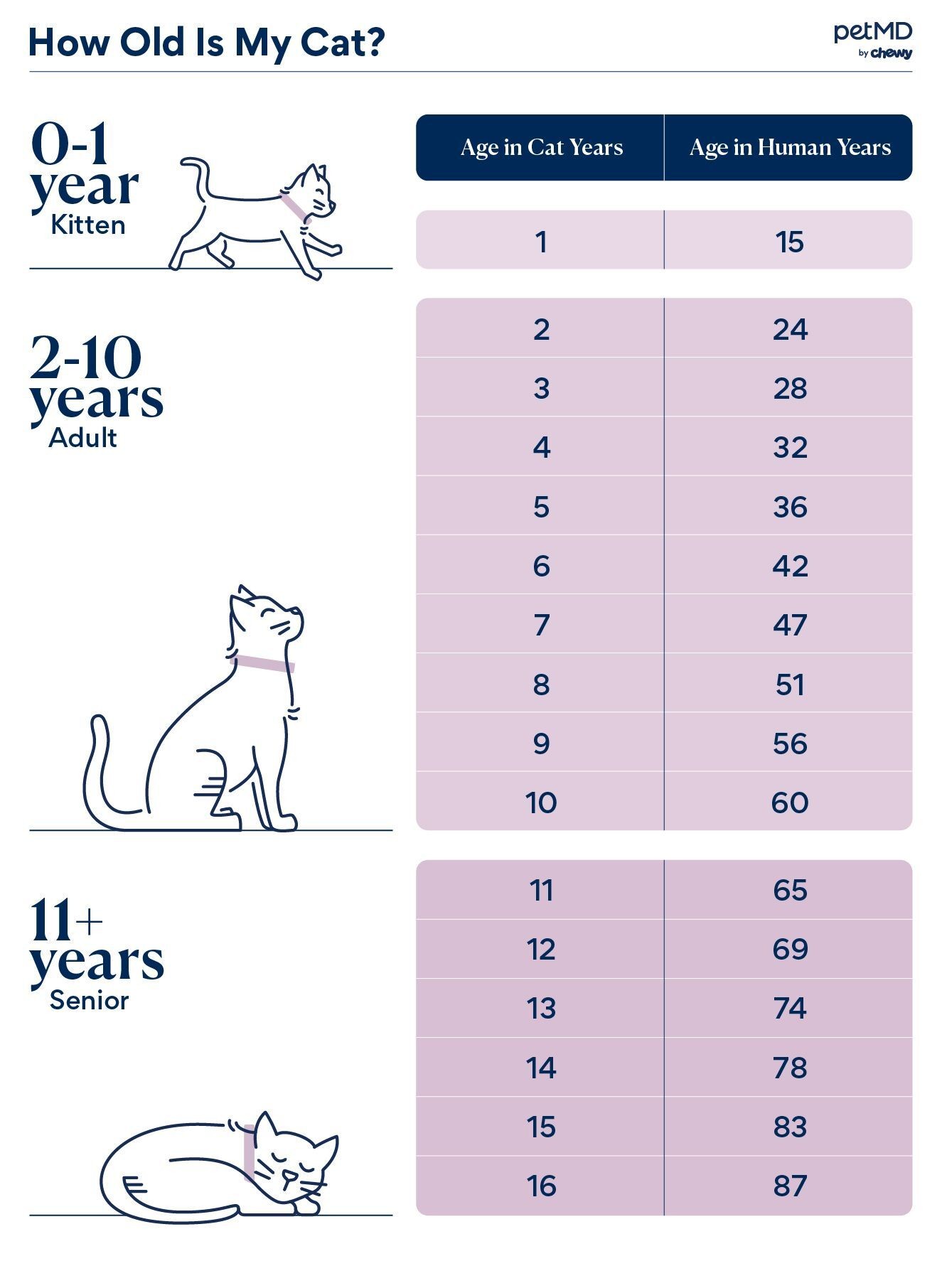Understanding how cat years compare to human years helps us better grasp our feline friends’ aging process and provide appropriate care throughout their lives. While the simple “multiply by seven” rule isn’t accurate, there’s a more nuanced way to calculate your cat’s age in human terms.
According to the American Veterinary Medical Association (AVMA), a cat reaches the equivalent of 15 human years in their first year of life. By their second birthday, they’re already 24 in human years. After this, each cat year equates to roughly four human years. So, a five-year-old cat would be around 36 in human years.
 A infographic chart detailing the age conversion of a cat
A infographic chart detailing the age conversion of a cat
Why Compare Cat Years to Human Years?
Comparing cat years to human years allows us to relate their aging process to our own. As Dr. Mary Gardner, DVM and co-founder of Lap of Love Veterinary Hospice, explains, understanding this comparison helps us recognize that a senior cat, around 11 years or older (equivalent to 60 human years), might experience similar mobility challenges as an older human. This knowledge allows for more empathetic and effective care.
Calculating Your Cat’s Age in Human Years
Use the following guidelines to estimate your cat’s age in human years:
- Year 1: 15 human years
- Year 2: 24 human years
- Year 3 and beyond: Add 4 human years for each additional cat year
Determining a Cat’s Age When Unknown
If you’ve adopted a cat and don’t know their birthdate, veterinarians can estimate their age using various health indicators, including:
- Teeth: Examining the condition and wear of their teeth.
- Muscle Tone: Assessing their muscle mass and overall physical condition.
- Coat: Observing the texture and appearance of their fur.
- Eyes: Checking for cloudiness or other age-related changes.
Cat Lifespan and Age-Appropriate Care
The average lifespan of a cat is 12 to 15 years, with slight variations between purebred and mixed-breed cats. Knowing your cat’s age in human years empowers you to provide the best possible care at each life stage, ensuring they live a long, healthy, and fulfilling life. Understanding their age allows you to tailor their diet, exercise, and veterinary care to their specific needs.
Conclusion
While not an exact science, comparing cat years to human years provides valuable insight into your feline companion’s aging journey. By understanding this comparison, we can provide more attuned care, enriching their lives and strengthening the bond we share. Consult with your veterinarian for personalized guidance on caring for your cat based on their estimated age.